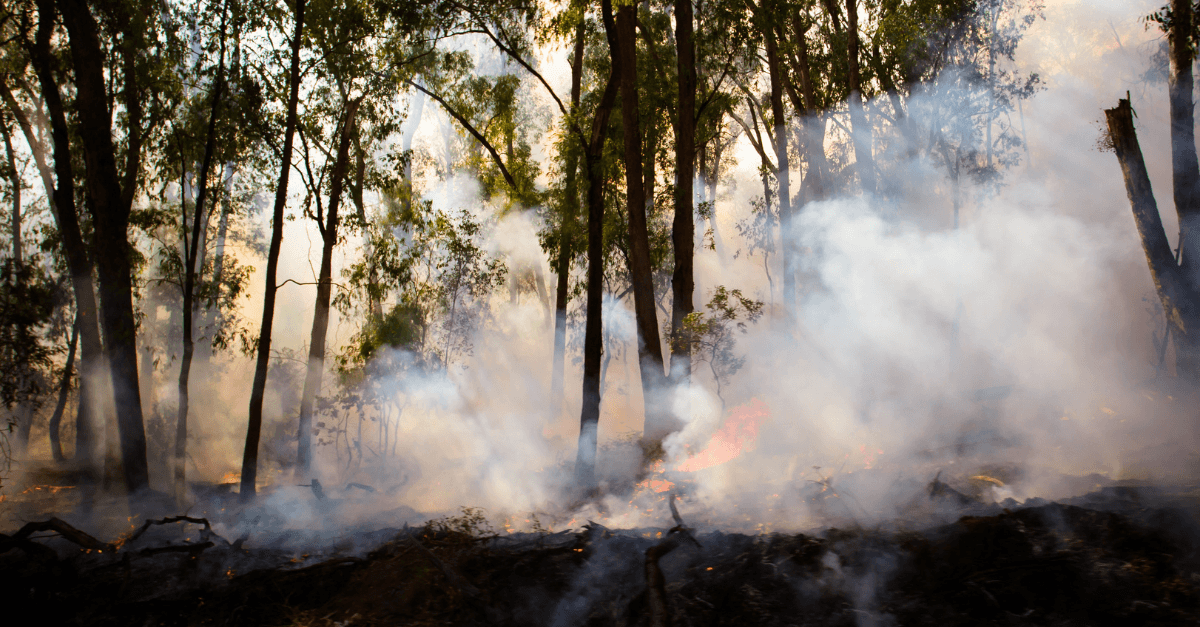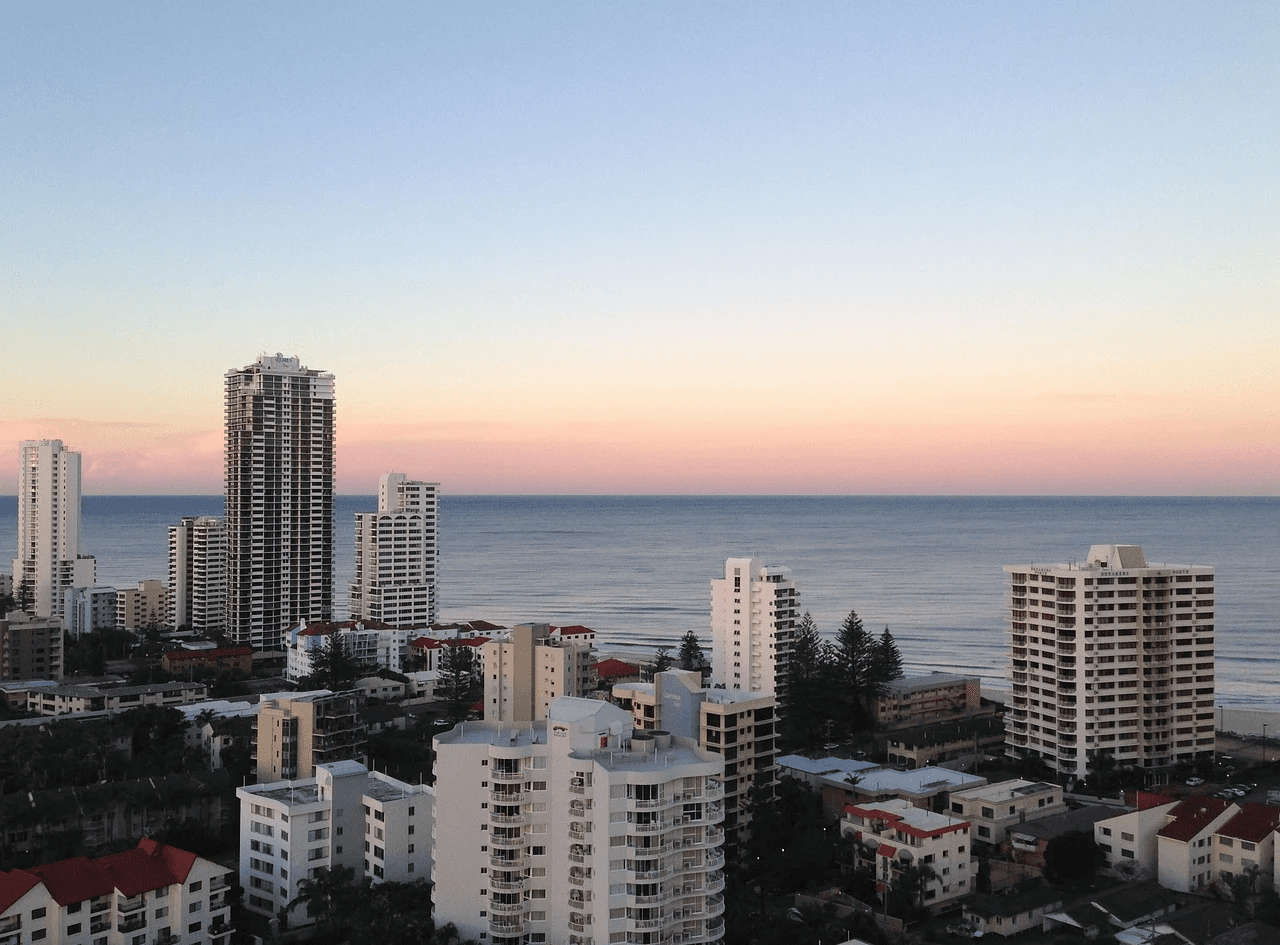


Tropical Cyclone Alfred Warning
The Bureau of Meteorology has issued a cyclone watch warning - forecasting Tropical Cyclone Alfred to make landfall in Queensland, with damaging gusts and heavy rain anticipated for the area across Sandy Cape to Grafton, including Brisbane, Gold Coast, Sunshine Coast and Byron Bay.
Queenslanders are on high alert with authorities advising residents to secure their homes as they prepare for the first tropical cyclone to cross the region in over 50 years.
At Sage, we’re committed to helping you protect your assets and minimise the impact of extreme weather events. Here’s our tips on how you can prepare for the storm.
Know Your Risk & Latest Updates
Your first step to Getting Ready is to find out when and where Cyclone Alfred may cross land, how severe it could potentially be, and if you will be affected. Stick to trusted sources for the most accurate and up to date information.
Have a question? Go to Frequently asked questions - Cyclones
Stay Informed - Monitor Weather Updates
One of the most important steps in extreme weather preparedness is staying informed. Tropical cyclones can form quickly, and their paths can change unexpectedly.
Make sure to:
Follow official government and meteorological updates regarding cyclone warnings.
Install a reliable weather app or sign up for emergency alerts to receive timely notifications.
Keep an eye on local authorities' instructions, especially if evacuation or shelter-in-place orders are issued.
Review Your Insurance Coverage
One of the best ways to protect yourself from financial loss during a cyclone is by ensuring you have the right insurance coverage. Damage from tropical cyclones often includes strong winds, heavy rainfall and flooding – all of which can severely affect your property.
Now is the perfect time to review your home, business and contents insurance. Here’s what to check:
Cyclone & Wind Damage: your policy may cover damage caused by cyclonic winds and flying debris.
Flooding: Many standard policies do not cover flood damage, so it’s crucial to confirm whether you have flood protection included.
Business Interruption: If you own a business, make sure your policy covers any interruption to your operations, loss of income, or repairs after a storm.
Evacuation and Temporary Accommodation: Some policies offer coverage for temporary accommodation if you need to leave your home.
If you’re unsure whether your insurance is adequate, get in touch with your Account Manager to ensure your policy aligns with your needs.
Make a Plan
Being prepared can reduce your risk during a disaster. Research shows that those who have undertaken disaster preparation also recover more quickly. Give some thought to what you will do if the worst happens.
Prepare Your Property
Taking action to protect your property before the storm hits can help minimise damage and speed up the recovery process. Consider the following:
Trim Trees and Secure Outdoor Items: Cyclone winds can turn loose branches and outdoor furniture into dangerous projectiles. Trim trees near your property and secure or store outdoor items like garden furniture, tools and toys.
Clear Drains and Gutters: Heavy rain can lead to flooding, so make sure that gutters and drains are clear of debris to allow for proper water flow.
Shutters and Windows: If you live in a cyclone-prone area, invest in shutters or strong coverings for windows to protect your home from flying debris.
Stock Emergency Supplies: Pack an emergency kit with enough supplies to last 3 days with essentials such as bottled water, non-perishable food, flashlights, batteries, first aid supplies and medications.
By preparing your home and property, you can reduce the likelihood of damage and create a safer environment for your family.
Stay Safe During the Storm
Once a tropical cyclone arrives, your primary focus should be safety. Follow these guidelines:
Stay Indoors: Do not venture outside until authorities declare it safe to do so. Strong winds, heavy rain and debris can make it dangerous.
Avoid Floodwaters: Don’t attempt to drive through flooded areas or walk in water, as it can be unpredictable and hazardous.
Listen to Authorities: Pay attention to government-issued alerts and instructions to ensure you are following the best course of action.
Cyclones can be unpredictable, but with the right preparation and safety measures in place, you can weather the storm with confidence.
For Urgent Assistance
Emergency calls: 000
TTY emergency calls: 106
State emergency service (SES): 132 500
Find a detailed list of Queensland Emergency Contacts
The Bureau of Meteorology has issued a cyclone watch warning - forecasting Tropical Cyclone Alfred to make landfall in Queensland, with damaging gusts and heavy rain anticipated for the area across Sandy Cape to Grafton, including Brisbane, Gold Coast, Sunshine Coast and Byron Bay.
Queenslanders are on high alert with authorities advising residents to secure their homes as they prepare for the first tropical cyclone to cross the region in over 50 years.
At Sage, we’re committed to helping you protect your assets and minimise the impact of extreme weather events. Here’s our tips on how you can prepare for the storm.
Know Your Risk & Latest Updates
Your first step to Getting Ready is to find out when and where Cyclone Alfred may cross land, how severe it could potentially be, and if you will be affected. Stick to trusted sources for the most accurate and up to date information.
Have a question? Go to Frequently asked questions - Cyclones
Stay Informed - Monitor Weather Updates
One of the most important steps in extreme weather preparedness is staying informed. Tropical cyclones can form quickly, and their paths can change unexpectedly.
Make sure to:
Follow official government and meteorological updates regarding cyclone warnings.
Install a reliable weather app or sign up for emergency alerts to receive timely notifications.
Keep an eye on local authorities' instructions, especially if evacuation or shelter-in-place orders are issued.
Review Your Insurance Coverage
One of the best ways to protect yourself from financial loss during a cyclone is by ensuring you have the right insurance coverage. Damage from tropical cyclones often includes strong winds, heavy rainfall and flooding – all of which can severely affect your property.
Now is the perfect time to review your home, business and contents insurance. Here’s what to check:
Cyclone & Wind Damage: your policy may cover damage caused by cyclonic winds and flying debris.
Flooding: Many standard policies do not cover flood damage, so it’s crucial to confirm whether you have flood protection included.
Business Interruption: If you own a business, make sure your policy covers any interruption to your operations, loss of income, or repairs after a storm.
Evacuation and Temporary Accommodation: Some policies offer coverage for temporary accommodation if you need to leave your home.
If you’re unsure whether your insurance is adequate, get in touch with your Account Manager to ensure your policy aligns with your needs.
Make a Plan
Being prepared can reduce your risk during a disaster. Research shows that those who have undertaken disaster preparation also recover more quickly. Give some thought to what you will do if the worst happens.
Prepare Your Property
Taking action to protect your property before the storm hits can help minimise damage and speed up the recovery process. Consider the following:
Trim Trees and Secure Outdoor Items: Cyclone winds can turn loose branches and outdoor furniture into dangerous projectiles. Trim trees near your property and secure or store outdoor items like garden furniture, tools and toys.
Clear Drains and Gutters: Heavy rain can lead to flooding, so make sure that gutters and drains are clear of debris to allow for proper water flow.
Shutters and Windows: If you live in a cyclone-prone area, invest in shutters or strong coverings for windows to protect your home from flying debris.
Stock Emergency Supplies: Pack an emergency kit with enough supplies to last 3 days with essentials such as bottled water, non-perishable food, flashlights, batteries, first aid supplies and medications.
By preparing your home and property, you can reduce the likelihood of damage and create a safer environment for your family.
Stay Safe During the Storm
Once a tropical cyclone arrives, your primary focus should be safety. Follow these guidelines:
Stay Indoors: Do not venture outside until authorities declare it safe to do so. Strong winds, heavy rain and debris can make it dangerous.
Avoid Floodwaters: Don’t attempt to drive through flooded areas or walk in water, as it can be unpredictable and hazardous.
Listen to Authorities: Pay attention to government-issued alerts and instructions to ensure you are following the best course of action.
Cyclones can be unpredictable, but with the right preparation and safety measures in place, you can weather the storm with confidence.
For Urgent Assistance
Emergency calls: 000
TTY emergency calls: 106
State emergency service (SES): 132 500
Find a detailed list of Queensland Emergency Contacts
The Bureau of Meteorology has issued a cyclone watch warning - forecasting Tropical Cyclone Alfred to make landfall in Queensland, with damaging gusts and heavy rain anticipated for the area across Sandy Cape to Grafton, including Brisbane, Gold Coast, Sunshine Coast and Byron Bay.
Queenslanders are on high alert with authorities advising residents to secure their homes as they prepare for the first tropical cyclone to cross the region in over 50 years.
At Sage, we’re committed to helping you protect your assets and minimise the impact of extreme weather events. Here’s our tips on how you can prepare for the storm.
Know Your Risk & Latest Updates
Your first step to Getting Ready is to find out when and where Cyclone Alfred may cross land, how severe it could potentially be, and if you will be affected. Stick to trusted sources for the most accurate and up to date information.
Have a question? Go to Frequently asked questions - Cyclones
Stay Informed - Monitor Weather Updates
One of the most important steps in extreme weather preparedness is staying informed. Tropical cyclones can form quickly, and their paths can change unexpectedly.
Make sure to:
Follow official government and meteorological updates regarding cyclone warnings.
Install a reliable weather app or sign up for emergency alerts to receive timely notifications.
Keep an eye on local authorities' instructions, especially if evacuation or shelter-in-place orders are issued.
Review Your Insurance Coverage
One of the best ways to protect yourself from financial loss during a cyclone is by ensuring you have the right insurance coverage. Damage from tropical cyclones often includes strong winds, heavy rainfall and flooding – all of which can severely affect your property.
Now is the perfect time to review your home, business and contents insurance. Here’s what to check:
Cyclone & Wind Damage: your policy may cover damage caused by cyclonic winds and flying debris.
Flooding: Many standard policies do not cover flood damage, so it’s crucial to confirm whether you have flood protection included.
Business Interruption: If you own a business, make sure your policy covers any interruption to your operations, loss of income, or repairs after a storm.
Evacuation and Temporary Accommodation: Some policies offer coverage for temporary accommodation if you need to leave your home.
If you’re unsure whether your insurance is adequate, get in touch with your Account Manager to ensure your policy aligns with your needs.
Make a Plan
Being prepared can reduce your risk during a disaster. Research shows that those who have undertaken disaster preparation also recover more quickly. Give some thought to what you will do if the worst happens.
Prepare Your Property
Taking action to protect your property before the storm hits can help minimise damage and speed up the recovery process. Consider the following:
Trim Trees and Secure Outdoor Items: Cyclone winds can turn loose branches and outdoor furniture into dangerous projectiles. Trim trees near your property and secure or store outdoor items like garden furniture, tools and toys.
Clear Drains and Gutters: Heavy rain can lead to flooding, so make sure that gutters and drains are clear of debris to allow for proper water flow.
Shutters and Windows: If you live in a cyclone-prone area, invest in shutters or strong coverings for windows to protect your home from flying debris.
Stock Emergency Supplies: Pack an emergency kit with enough supplies to last 3 days with essentials such as bottled water, non-perishable food, flashlights, batteries, first aid supplies and medications.
By preparing your home and property, you can reduce the likelihood of damage and create a safer environment for your family.
Stay Safe During the Storm
Once a tropical cyclone arrives, your primary focus should be safety. Follow these guidelines:
Stay Indoors: Do not venture outside until authorities declare it safe to do so. Strong winds, heavy rain and debris can make it dangerous.
Avoid Floodwaters: Don’t attempt to drive through flooded areas or walk in water, as it can be unpredictable and hazardous.
Listen to Authorities: Pay attention to government-issued alerts and instructions to ensure you are following the best course of action.
Cyclones can be unpredictable, but with the right preparation and safety measures in place, you can weather the storm with confidence.
For Urgent Assistance
Emergency calls: 000
TTY emergency calls: 106
State emergency service (SES): 132 500
Find a detailed list of Queensland Emergency Contacts





